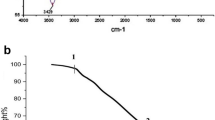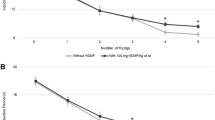Abstract
The main objective of the present work is to evaluate whether the polyphenols derived from apple pomace could inhibit the production of acrylamide and lipid oxidation in fried French fries (APE). Because of the presence of potent acrylamide inhibitors and radical scavengers, polyphenols from apple pomace showed the greatest inhibition on lipid oxidation on frying. The oxidative solidity and antioxidant capacity of French fry sample treated with polyphenols was assessed by the peroxide value, p-anisidine value and iodine value. The sensory examination exhibited that the polyphenols treated samples were able to maintain the high quality in all attributes. The HPLC results indicated that there was a maximum acrylamide inhibition and minimum lipid deterioration observed in the French fries during frying with polyphenols treated sample. The most efficient prevention of acrylamide generation in the French fry sample treated with polyphenols was determined to be 67.1 g/kg when compared to a range of 163.7 g/kg for the BHA-treated sample. Natural polyphenols can take the place of synthetic antioxidants, which may be crucial in minimizing and mitigating the development of harmful acrylamide.
Graphical Abstract










Similar content being viewed by others
Data Availability
All the data are available in the public databases as provided in the manuscript.
References
Lumbaque EC, Schweigert CE, dos Santos LO (2021) Degradation of pharmaceuticals in wastewater matrices through solar light-driven photocatalyst prepared from petrochemical waste. Environ Sci Pollut Res 28:24124–24137. https://doi.org/10.1007/s11356-020-12142-8
International Agency for Research on Cancer (IARC) (1994) Monographs on the evaluation of carcinogenic risks to humans: some industrial chemicals, vol 60. International agency for Research on Cancer (IARC), Lyon, p 389
Samec D, Maretic M, Lugaric I, Mesic A, Sondi BA, Duralija B (2016) Assessment of the differences in the physical, chemical and phytochemical properties of four strawberry cultivars using principal component analysis. Food Chem 194:828–834. https://doi.org/10.1016/j.foodchem.2015.08.095
Yang Y, Achaerandio I, Pujola M (2016) Influence of the frying process and potato cultivar on acrylamide formation in French fries. Food Control 62:216–223. https://doi.org/10.1016/j.foodcont.2015.10.028
Baharinikoo L, Chaichi MJ, Ganjali MR (2022) Fluorescence determination of acrylamide in potato chips based on P540 and P503 fluorescent reagents. Iran J Chem Chem Eng 41(1):121–134. https://doi.org/10.30492/ijcce.2021.109173.3622
Sun Q, Du M, Navarre DA, Zhu M (2021) Effect of cooking methods on bioactivity of polyphenols in purple potatoes. Antioxidants (Basel) 10(8):1176. https://doi.org/10.3390/antiox10081176
Zhu Y, Wang P, Wang F, Zhao M, Hu X, Chen F (2016) The kinetics of the inhibition of acrylamide by glycine in potato model systems. J Sci Food Agric 96:548–554. https://doi.org/10.1002/jsfa.7122
Piedrahita AM, Penaloza J, Cogollo A, Rojano BA (2015) Kinetic study of the oxidative degradation of choibá oil (Dipteryx oleifera Benth.) with addition of rosemary extract (Rosmarinus officinalis L.). Food Nutr Sci 6:466–479. https://doi.org/10.4236/fns.2015.65048
Shin DM, Kim DH, Yune JH, Kwon HC, Kim HJ, Seo HG, Han SG (2019) Oxidative stability and quality characteristics of duck, chicken, swine and bovine skin fats extracted by pressurized hot water extraction. Food Sci Anim Resour 39(3):446–458. https://doi.org/10.5851/kosfa.2019.e41
Seyedi S, Javanmarddakheli M, Shekarabi A, Shavandi M, Farhadi S (2021) Reduction of acrylamide by orange waste extract phenolic compounds in potato chips. J Food Bioprocess Eng 4(1):75–81. https://doi.org/10.22059/JFABE.2021.301112.1049
Tajner CA, Kita A, Rytel E (2021) Characteristics of French fries and potato chips in aspect of acrylamide content—methods of reducing the toxic compound content in ready potato snacks. Appl Sci 11(9):3943. https://doi.org/10.3390/app11093943
Verma V, Yadav N (2022) Acrylamide content in starch based commercial foods by using high performance liquid chromatography and its association with browning index. Curr Res Food Sci 5:464–470. https://doi.org/10.1016/j.crfs.2022.01.010
Nayeem N, Imran M, Mohammed BAS, Imam RS, Ali AF, Alamri AS, Alsanie WF, Alhomrani M (2022) Total phenolic, flavonoid contents, and biological activities of stem extracts of Astragalus spinosus (Forssk.) Muschl. grown in Northern Border Province, Saudi Arabia. Saudi J Biol Sci 29(3):1277–1282. https://doi.org/10.1016/j.sjbs.2021.12.029
Abderrahim F, Huanatico E, Segura R, Arribas S, Gonzalez MC, Hoyos LC (2015) Physical features, phenolic compounds, betalains and total antioxidant capacity of coloured quinoa seeds (Chenopodium quinoa Willd.) from Peruvian Altiplano. Food Chem 183:83–90. https://doi.org/10.1016/j.foodchem.2015.03.029
Sharma S, Arora V (2022) Simultaneous spectrophotometric estimation of curcumin and quercetin in mixture. Res J Pharm Technol 15(8):3502–3506. https://doi.org/10.52711/0974-360X.2022.00587
Maslov O, Kolisnyk S, Komisarenko M, Golik M (2022) Study of total antioxidant activity of green tea leaves (Camellia sinensis L.). Herba Pol 68(1):1–9. https://doi.org/10.2478/hepo-2022-0003
Haroen U, Syafwan KK, Budiansyah A (2022) Determination of nutrient content, β-carotene, and antioxidant activity of Moringa oleifera extraction using organic solution. J Adv Vet Anim Res 9(2):246–254. https://doi.org/10.5455/javar.2022.i590.0
Codex Alimentarius Commission (2001) Codex general standard for food additives, CX-STAN 192–1995. FAO/WHO, Rome
Zhang Q, Saleh ASM, Chen J, Shen Q (2012) Chemical alterations taken place during deep-fat frying based on certain reaction products: a review. Chem Phys Lipids 165:662–681. https://doi.org/10.1016/j.chemphyslip.2012.07.002
AOAC (2019) Official methods of analysis of the Association of Official Analytical Chemists: official methods of analysis of AOAC international, 21st edn. AOAC, Arlington
Makori SI, Mu TH, Sun HN (2022) Profiling of polyphenols, flavonoids and anthocyanins in potato peel and flesh from four potato varieties. Potato Res 65:193–208. https://doi.org/10.1007/s11540-021-09516-x
Pollini L, Cossignani L, Juan C, Manes J (2021) Extraction of phenolic compounds from fresh apple pomace by different non-conventional techniques. Molecules 26(14):4272. https://doi.org/10.3390/molecules26144272
Rasheed H, Ahmad D, Bao J (2022) Genetic diversity and health properties of polyphenols in potato. Antioxidants 11:603. https://doi.org/10.3390/antiox11040603
Chunli Z, Wei L, Jing Z, Chi Y, Yi S, Dong S, YuanYN QL (2014) The effect of high hydrostatic pressure on themicrobiological quality and physical–chemical characteristics of pumpkin (Cucurbita maxima Duch.) during refrigerated storage. Innov Food Sci Emerg Technol 21:24–34. https://doi.org/10.1016/j.ifset.2013.11.002
Funding
The work was not supported by any agency.
Author information
Authors and Affiliations
Contributions
Conceived, investigations, original draft: data draft, initial editing: TPR, VAB; preliminary phytochemical analysis final editing: SNR, sample authentication, conceptualization, final review: ASBP.
Corresponding author
Ethics declarations
Competing Interests
The authors declare that they have no competing interests.
Ethical Approval
Not applicable.
Consent to Participate
Not applicable.
Consent for Publication
Not applicable.
Research Involving Human and/or Animal Participants
This article does not contain any studies with human or animal subjects.
Additional information
Publisher's Note
Springer Nature remains neutral with regard to jurisdictional claims in published maps and institutional affiliations.
Rights and permissions
Springer Nature or its licensor (e.g. a society or other partner) holds exclusive rights to this article under a publishing agreement with the author(s) or other rightsholder(s); author self-archiving of the accepted manuscript version of this article is solely governed by the terms of such publishing agreement and applicable law.
About this article
Cite this article
Rajesh, T.P., Basheer, V.A., Packirisamy, A.S.B. et al. Effective Inhibition of Enzymatic Browning and Carcinogenic Acrylamide in Fried Food by Polyphenols. Top Catal 67, 300–312 (2024). https://doi.org/10.1007/s11244-023-01843-2
Accepted:
Published:
Issue Date:
DOI: https://doi.org/10.1007/s11244-023-01843-2




